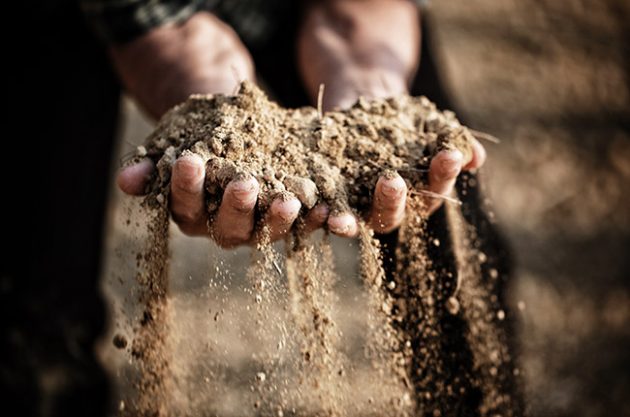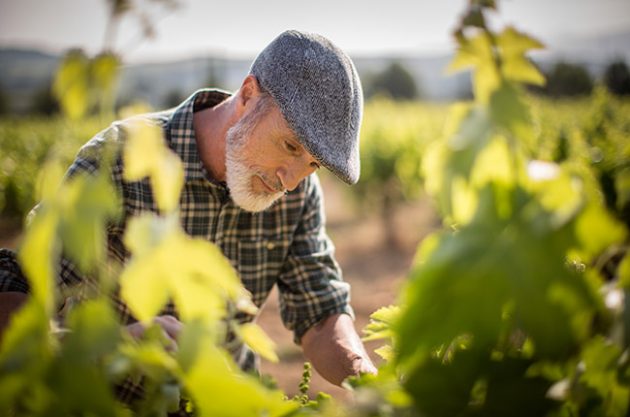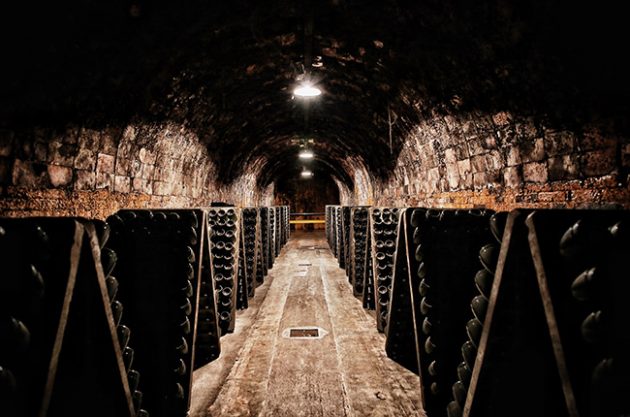Sponsored content
At the beginning there was Champagne - but many could not afford the expense. This inspired businesses in other countries to produce local cheaper imitations of Champagne, sparkling wines made at the minimum cost, buying base wines and pumping them full of sugar and carbon dioxide. Others went one step up in the quality ladder, by mirroring Champagne...
A history of Cava
In 1872, in Spain’s Catalonia region, Josep Raventòs produced the first bottle of sparkling wine using the Champagne method. His aim was to compete, within Spain, with the Champagne that was imported by the then highly Francophile Spanish Court. The trade wars of the time, which resulted in tariffs against imports of Champagne, and the support by the Spanish Monarchy, greatly helped the development of the new ‘Catalonian Champagne’. Raventòs was not particularly concerned about the grape varieties or the terroir, he just transposed the Champagne method to Penedès.

And he was right. Indeed, Catalonia’s Xampany, as it was called, was an immediate success. From its inception the sparkling wine sector grew steadily, with a focus on the domestic market, until the 1930 economic crisis. There was a short but deep decline when phylloxera arrived to Catalonia and many years later there was the Spanish Civil War and the difficult period afterwards, but by the 1950s production was already increasing rapidly.
In 1959 the name ‘Cava’ was invented: it means ‘cellar’ in Spanish and refers to the long ageing period in which the bottles undergo their second fermentation in the cellars. The name Cava became official in 1972 when Spain agreed with the French authorities to ban the commercial names of the time – Champán and Xampany. Then Cava became an official appellation in 1986, at the time of Spain’s entry into the European Union.
The Cava producers created an industry around their sparkling wine and through this developed many key innovations. They improved the Champagne method by developing systems to mechanise riddling, selected yeasts best suited to the second fermentation, designed optimal presses and introduced several other methods that increased quality while keeping costs down.
By the late 1970s Cava was ready to be launched as a very competitive product in the international market. No other wineproducing region could match the lucrative combination of quality at such cheap prices that Cava producers could offer with their sparkling wines.
Their success was remarkable. Cava became the sparkling wine of the middle classes in Germany, Britain, Belgium and Scandinavian countries. Then the US, Japan and, more recently, even France, became enamoured by Cava. Today, two thirds of the Cava production – more than 150 million bottles – are exported each year all over the world. But 85% of exports are basic Cava – commercial wines. For many years the market was not willing to understand the concept of high-quality Cava.

Embracing Cava characteristics
Cava’s ultimate path to success came from embracing its point of difference and from renouncing the original focus of imitating Champagne. Premium Cava would not aim to be a cheap Champagne, but a wine with its own personality. Top Cava has unique characteristics and a high potential for distinctive quality but, until recently, few people were aware of that.
The Reserva quality level was a great leap forward for Cava markets. People who were used to young Cavas discovered that by spending a little bit extra they could enjoy far greater complexity and, most of all, personality in their wines. The amazing success of the Reserva de la Familia label by Juvé y Camps is probably the best example. Nobody would confuse it with Champagne, but people love it precisely because of that. Cava with an indication of vintage became a recognised signal of higher quality.
The next step up was the recognition of the Gran Reserva designation – ambitious wines with ambitious prices, targeted at fine wine markets. These are wines that delve deeper into the unique qualities of Cava by mastering the most delicate elements of the Champagne method – the extended bottle ageing on lees.
It took 70 years to make Cava in a reliable, competitive and efficient way. It took 30 years more to master the intricacies and reap the opportunities of bottle ageing. The conditions for going up the third and definitive step in the quality ladder – expressing terroir in the bottle – were not realised until the late 1990s.
A few producers undertook the pioneering work that paved the way to the whole region. Recaredo is arguably the first hero of terroir in Penedès. Initially there was widespread reticence in the market to pay more for a Cava than for a Champagne, but this dwindled as people tasted the difference in its terroir-driven Cavas, with other producers following this trend.

The revolution in the Cava region is taking place in the vineyard and today’s top wines are just the nascent results. There is intensive research into the best sites, desperate efforts to save and revive ancient vines, indepth investigations into old varieties and clones, and increasing numbers of producers adopting biodynamic methods. The Cava DO has the highest proportion of organic and biodynamic vineyards in Spain and boasts one of the most active clusters in Europe.
New classification: Cava de Paraje Calificado
For once, legislation is following the advancements in research and the needs of producers. A new classification for Cava, the Cava de Paraje Calificado (single-vineyard wines) was launched in June 2015. This is the top rung in terms of quality and the Cavas that carry this seal will be a producer’s most ambitious wines, sourced from single estates in the very best terroirs of the Cava-producing region. There are rigorous standards to achieve: all wines shall be aged to at least at Gran Reserva level (36 months), must come from an identified vineyard, be traceable, and respond to more rigorous growing conditions (lower yields and older vines). There will be no classification of estates which is a welcome decision. It is up to the market, not the regulatory bodies, to rank wines by quality. There are already several single-vineyard Cavas on the market now – made by most of the top producers mentioned on these pages. More will follow. They are wines of excellent quality, already having aged in bottle on their lees for more than 36 months.
The challenge for the future is to change the perception of Cava among consumers. There will always be a market for the cheap and cheerful sparkling wines that fly off supermarket shelves, but there is also room for more exciting premium Cavas. These wines will increasingly become the real Cavas – the affordable but high-quality Reserva wines, the complex Gran Reserva Cavas, and the top-of-thepyramid Gran Reserva Single-Vineyard Cavas de Paraje Calificado: wines to keep for many years, to toast with at grand celebrations and to enjoy with the image of their vineyards in mind.
They are the classic sparkling wines of the 21st century; the peers rather than the competitors of Champagne.







